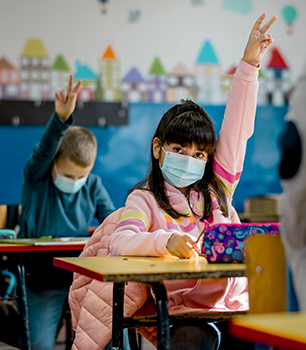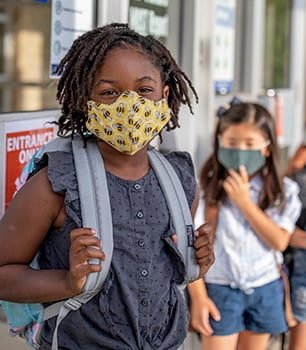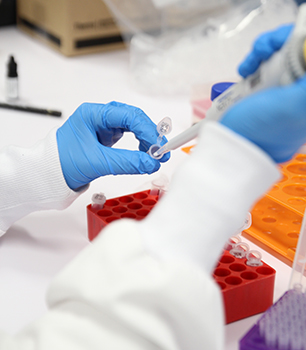What is COVID-19?
COVID-19 is caused by a new strain of a family of viruses known as coronaviruses, which are frequently found in animals and can also circulate in humans.
Three novel coronaviruses have emerged this century, including SARS-CoV (Severe Acute Respiratory Syndrome Coronavirus) in 2002, MERS-CoV (Middle East Respiratory Syndrome Coronavirus) in 2012, and SARS-COV-2 (which causes COVID-19) in December 2019.
COVID-19 has spread much further around the globe than either of these other viruses and has already caused more deaths than SARS-CoV and MERS-CoV combined.
What does COVID-19 look like in children?
All children are at risk of getting COVID-19. Symptoms in children are generally milder than what adults experience.
For many children, the symptoms look like any other respiratory viral infections: cough, fever and a runny nose. This means most children will be able to be looked after at home. The Omicron variant has seen more young children present with croup symptoms. A barking cough or noisy breathing should get checked out by a doctor. A very small percentage of children become more unwell with COVID-19, such as a prolonged fever (5+ days), breathing difficulties, and abdominal pain.
Most children with COVID-19 completely recover and recover quickly. Children with COVID-19 are unwell for about 6 days, but this can vary. For children who experience more severe COVID-19 symptoms, they tend to spend about 2 days in hospital, or 7 days if they require ICU care.
Though COVID-19 is referred to as a “respiratory” viral infection, it can affect anywhere in the body, such as the lungs, heart, kidney, liver, and nervous system.
What about Omicron?
The Omicron variant was first reported in November 2021 and has spread globally with cases now in Australia.
We are quickly learning more about this variant including how easily it spreads, whether it is more or less severe than other variants, and whether our current vaccines provide effective protection. From what we currently know, most children who get Omicron will only experience a mild infection, much like other variants.
While there’s no publicly available data as yet on how effective the vaccine is against Omicron specifically for children, the estimated vaccine effectiveness against severe disease due to Omicron six months after an adult has received the second Pfizer dose is 71%, which is raised to 98% after a booster. It is therefore likely that Pfizer and other mRNA vaccines are still effective at protecting against severe disease due to Omicron even six months after their second vaccine.






